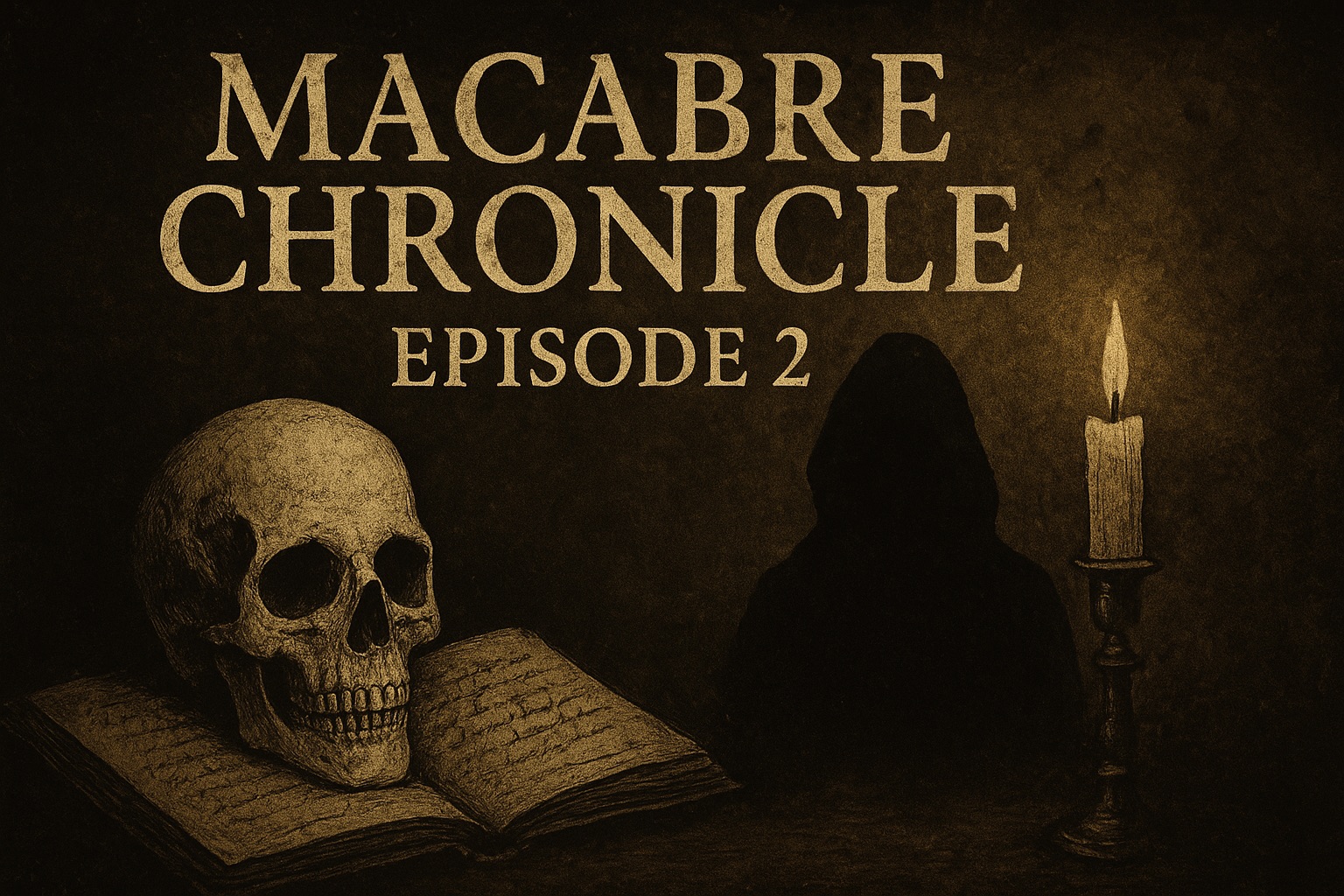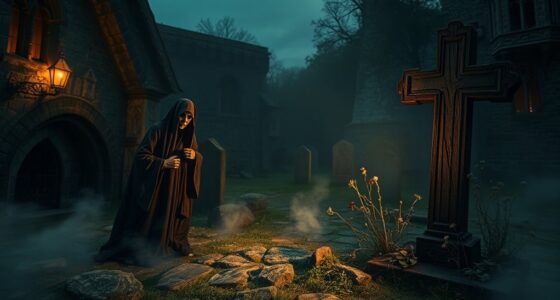⚠️ Warning: This episode contains graphic descriptions of violence, cannibalism, and cruelty. It is not intended for children or the faint-hearted. Listener discretion is strongly advised.
🎥 Watch the Full Episode
Introduction
Welcome back to Macabre Chronicle, our exploration of history’s darkest corners.
In our first episode, we examined bizarre practices like mummy-unwrapping parties and bleeding corpses. Today, we descend even further. History is not a comforting storybook—it is often a catalogue of hunger, cruelty, superstition, and scientific indifference.
This hour-long episode takes us across centuries and continents to confront grim realities:
- Impaled bodies lining a battlefield
- Bones arranged into chandeliers
- Starving settlers driven to cannibalism
- Killers who profited from arsenic
- A stuffed human displayed as a museum curiosity
These stories are not designed for children. They are meant to unsettle adults and remind us that the past was as brutal as it was bizarre.
Segment Highlights
Vlad the Impaler’s Forest of Corpses
In 15th-century Wallachia, Vlad Dracula weaponised terror through impalement. Chroniclers described a “forest” of 20,000 corpses left to rot on stakes—a grotesque spectacle meant to deter invaders and consolidate power.
The Sedlec Ossuary and Europe’s Bone Churches
Thousands of human remains were transformed into macabre art. In Kutná Hora, Czech Republic, the Sedlec Ossuary’s chandeliers, chalices, and candelabras were crafted from bones—grim reminders of mortality.
The Donner Party – Hunger’s Breaking Point
Trapped in the Sierra Nevada in the winter of 1846–47, pioneers turned to cannibalism to survive. By the end, 42 were dead, 47 survived, and American memory was scarred by the image of flesh cooked in snowbound cabins.
Franklin’s Lost Expedition – Desperation on the Arctic Ice
In 1845, HMS Erebus and Terror vanished in the Canadian Arctic. Forensic evidence now confirms that survivors resorted to cannibalism, corroborating Inuit testimony long dismissed by Victorian England.
Lingchi – Death by a Thousand Cuts
A form of Chinese execution abolished in 1905, lingchi prolonged suffering through systematic slicing. Victims were reduced piece by piece, their deaths ritualised as a spectacle of state power.
Scaphism – Eaten Alive by Insects
An ancient Persian method (possibly myth), scaphism trapped victims between boats, smeared them with honey and milk, and left them for insects and vermin to devour alive over days.
Burke and Hare – Murder for Profit
In 1820s Edinburgh, Burke and Hare murdered at least 16 people to sell their bodies for medical dissection, sparking outrage that led to Britain’s Anatomy Act of 1832.
The Paris Catacombs – Millions Underground
More than six million skeletons lie beneath Paris, arranged in eerie patterns in former quarries—an ossified city of the dead created from overflowing cemeteries.
Elizabeth Báthory – The Blood Countess
Accused of torturing and killing hundreds of young women in 16th-century Hungary, Countess Elizabeth Báthory remains one of history’s most infamous figures, forever linked to legends of vampiric cruelty.
Unit 731 – Science Turned to Slaughter
During WWII, Japan’s Unit 731 experimented on live prisoners, infecting them with plague, cholera, and anthrax, and dissecting them alive—atrocities hidden under the guise of research.
Mary Ann Cotton – Arsenic and Insurance
Victorian England’s first female serial killer, Mary Ann Cotton poisoned husbands, children, and stepchildren with arsenic, exploiting life insurance policies until her arrest in 1872.
El Negro – The Stuffed Man in the Museum
In 1830, French taxidermists displayed the stuffed body of a San man in Spain, where it remained until international outrage forced his reburial in 2000—an emblem of colonial dehumanisation.
The Dancing Plague of 1518
Hundreds in Strasbourg danced uncontrollably for months, some until death. Explanations range from ergot poisoning to mass psychogenic disorder, but the cause remains one of history’s strangest mysteries.
Jamestown – Survival Cannibalism in the New World
The 1609–1610 Starving Time forced English settlers to eat horses, vermin, and eventually human flesh. Archaeology in 2012 confirmed the dismemberment of a 14-year-old girl—physical proof of desperation.
Conclusion – Facing History’s Darkness
History is both a triumph of progress and a testament to cruelty.
- Vlad the Impaler weaponised terror.
- Ossuaries and catacombs turned death into decoration.
- Starvation drove pioneers and settlers to cannibalism.
- Lingchi, scaphism, and Burking turned law and science into torture.
- Elizabeth Báthory and Mary Ann Cotton proved cruelty could hide in castles and kitchens.
- Unit 731 cloaked atrocity in research.
- El Negro embodied colonial dehumanisation.
- Mass hysteria in Strasbourg and Jamestown’s desperation revealed how fragile civilisation can be.
These stories remind us that beneath the veneer of progress, humans remain capable of extraordinary cruelty. To confront these shadows is not to glorify them, but to learn from them.
Thank you for joining us for Macabre Chronicle – Episode 2: History’s Macabre Shadows.
Next time, we’ll uncover more unsettling truths from the past. Until then—sleep with one eye open.









